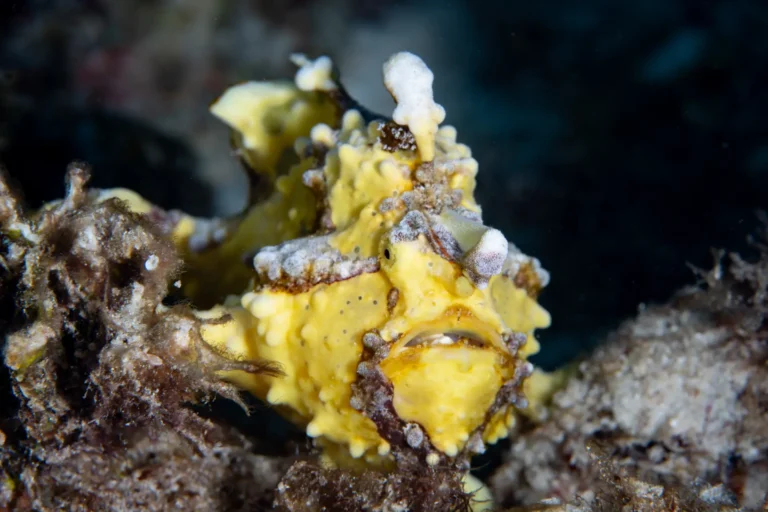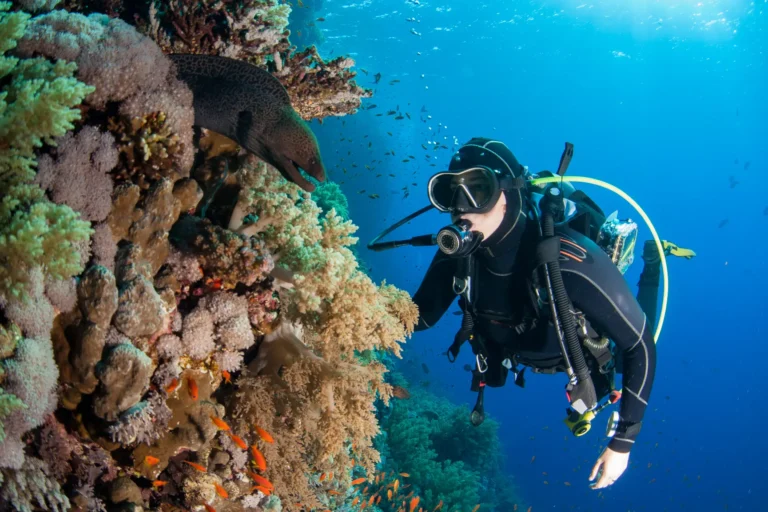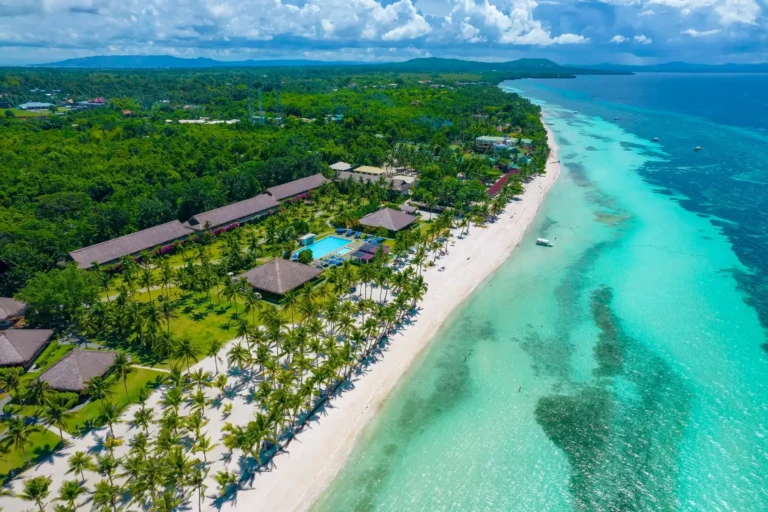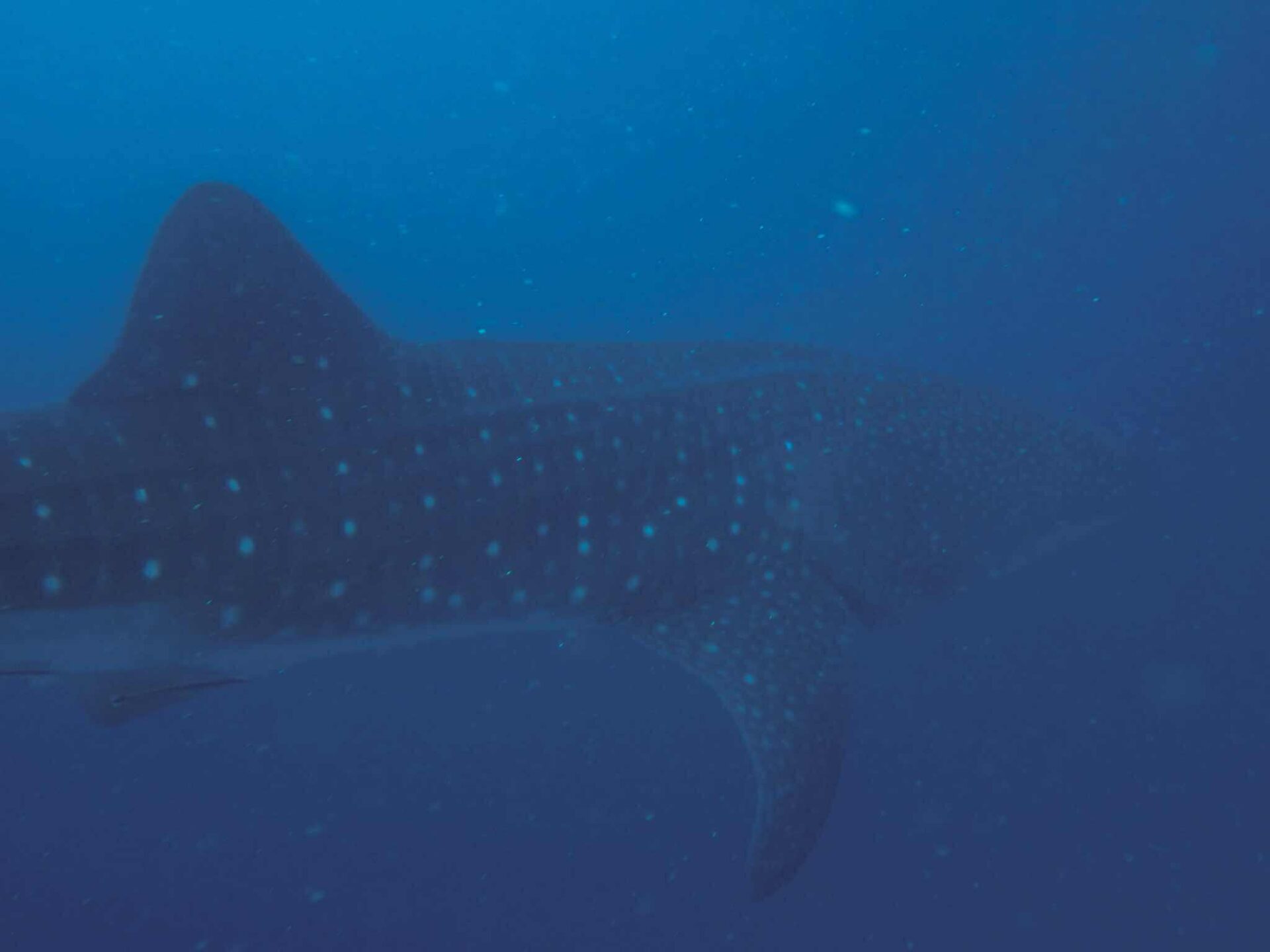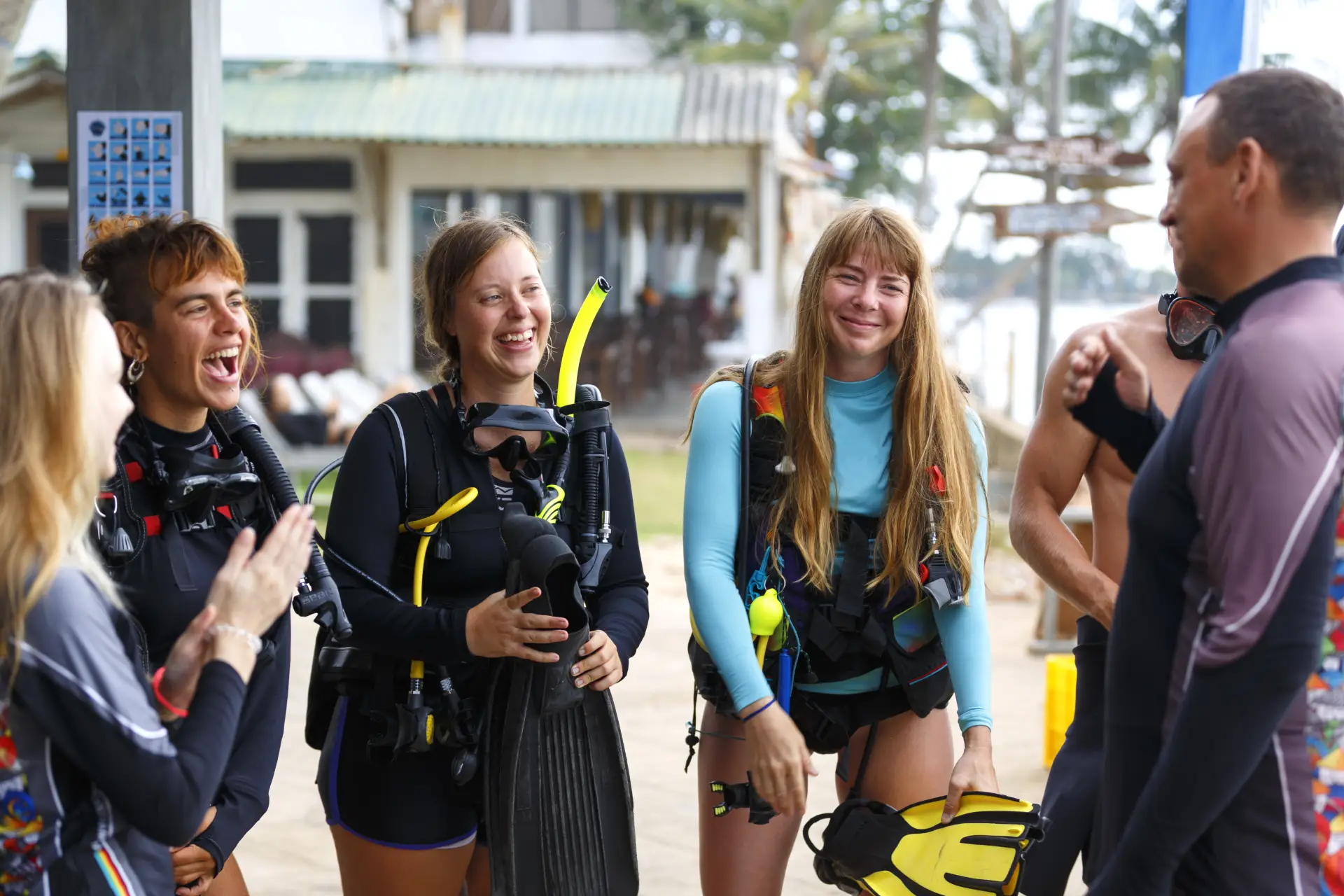Masters of Disguise: The Incredible Frogfish of Bohol’s Reefs
If you’ve ever drifted over a coral reef in Bohol and felt like something was watching you—but couldn’t see a thing—you may have unknowingly passed one of the reef’s most elusive predators: the frogfish. Often overlooked even by experienced divers, these oddball creatures are among the ocean’s best masters of disguise. And for those who know how to spot them, they’re one of the most rewarding sightings in the region.
In this article, we’ll dive deep into the strange and fascinating world of frogfish—what makes them so unique, why Bohol is a great place to see them, and how you can train your eye to spot these expertly camouflaged hunters.
What Is a Frogfish?
Frogfish are a type of anglerfish found in tropical and subtropical waters around the world. In Bohol, they can be seen at many dive sites around Panglao, Balicasag Island, and Pamilacan, often blending seamlessly with sponges, corals, or algae-covered rocks.
What makes frogfish truly stand out—ironically—is their ability to not stand out at all. Their camouflage is so advanced that they can mimic the exact color and texture of their surroundings, becoming nearly invisible even in plain sight.
The Weird and Wonderful Anatomy of a Frogfish
Frogfish aren’t built like your average fish. They have:
- Stocky, rounded bodies that often resemble sponges or corals.
- Modified pectoral fins that act like legs, allowing them to “walk” across the reef.
- A lure (called an esca) attached to a rod (the illicium) on their heads, used to attract prey.
- A lightning-fast gulp that allows them to vacuum in prey in as little as 6 milliseconds—one of the fastest strikes in the animal kingdom.
Despite their sedentary appearance, frogfish are stealthy and efficient predators. They don’t chase their prey—they lie in wait and let it come to them.
Where to See Frogfish in Bohol
The reefs around Panglao Island, especially near sites like Dauin Wall, Kalipayan, and Doljo Point, are known hotspots for macro life and excellent places to find frogfish.
Other top spots include:
- Balicasag Island – Especially near areas with dense sponge and coral growth.
- Napaling Point – While better known for its sardine run, the reef wall here harbors plenty of camouflage specialists.
- Pamilacan Island – A mix of sloping reefs and sandy patches, ideal habitat for ambush predators like frogfish.
The best way to increase your chances of seeing one? Dive with a guide who knows what to look for. At Sierra Madre Divers, our dive team has years of experience spotting these well-camouflaged creatures and will gladly help you track one down.
The Art of Camouflage
Frogfish aren’t just good at hiding—they’re masters of mimicry. Depending on the species and habitat, frogfish can look like:
- Brightly colored sponges
- Coral-encrusted rocks
- Patches of algae
- Even sea squirts or debris
Some species can even change color over time to better match their surroundings. This ability allows them to become nearly indistinguishable from their environment, making every frogfish encounter feel like solving a visual puzzle.
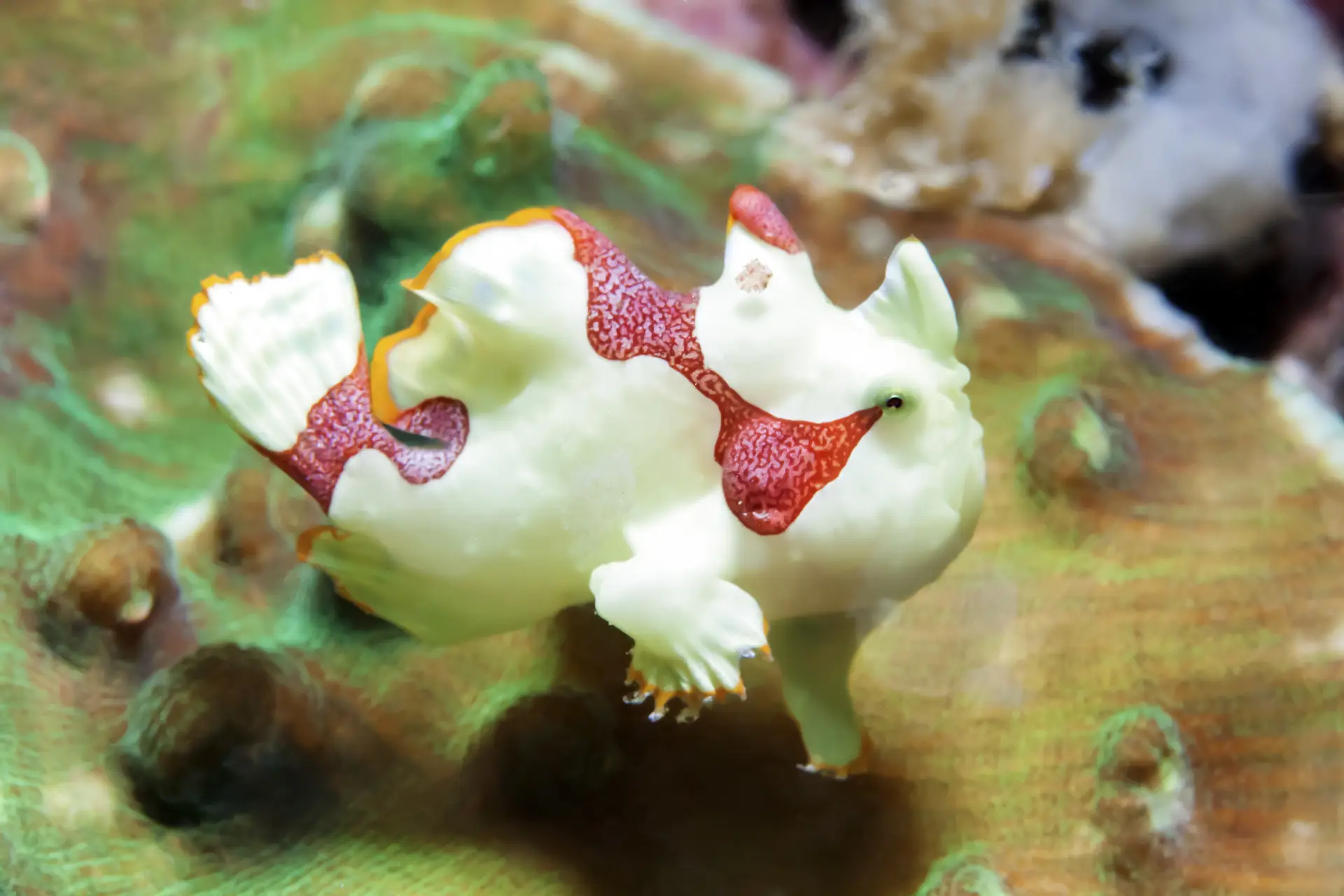
Watching a Frogfish Hunt
The frogfish’s hunting method is as fascinating as its appearance. Here’s how it works:
- Ambush Setup: The frogfish sits still on the reef, looking like part of the scenery.
- Lure in Action: It waves its esca, mimicking the movements of a small worm or shrimp to attract curious prey.
- Strike: When the prey gets too close, the frogfish opens its mouth so rapidly that it creates a vacuum, sucking the target in whole.
They can swallow fish nearly their own size—and they do it with zero warning or movement beforehand. Blink and you’ll miss it.
Why Photographers Love Frogfish
Underwater macro photographers are obsessed with frogfish, and it’s easy to see why:
- Their odd textures and alien-like appearance make for unforgettable close-ups.
- They rarely swim away, allowing divers time to frame the perfect shot.
- Each frogfish is visually unique, with differences in color, size, and surface pattern.
If you’re hoping to get that “bucket list” frogfish photo while diving in Bohol, be sure to bring your macro lens and be patient—these creatures may be motionless, but they’re far from boring.
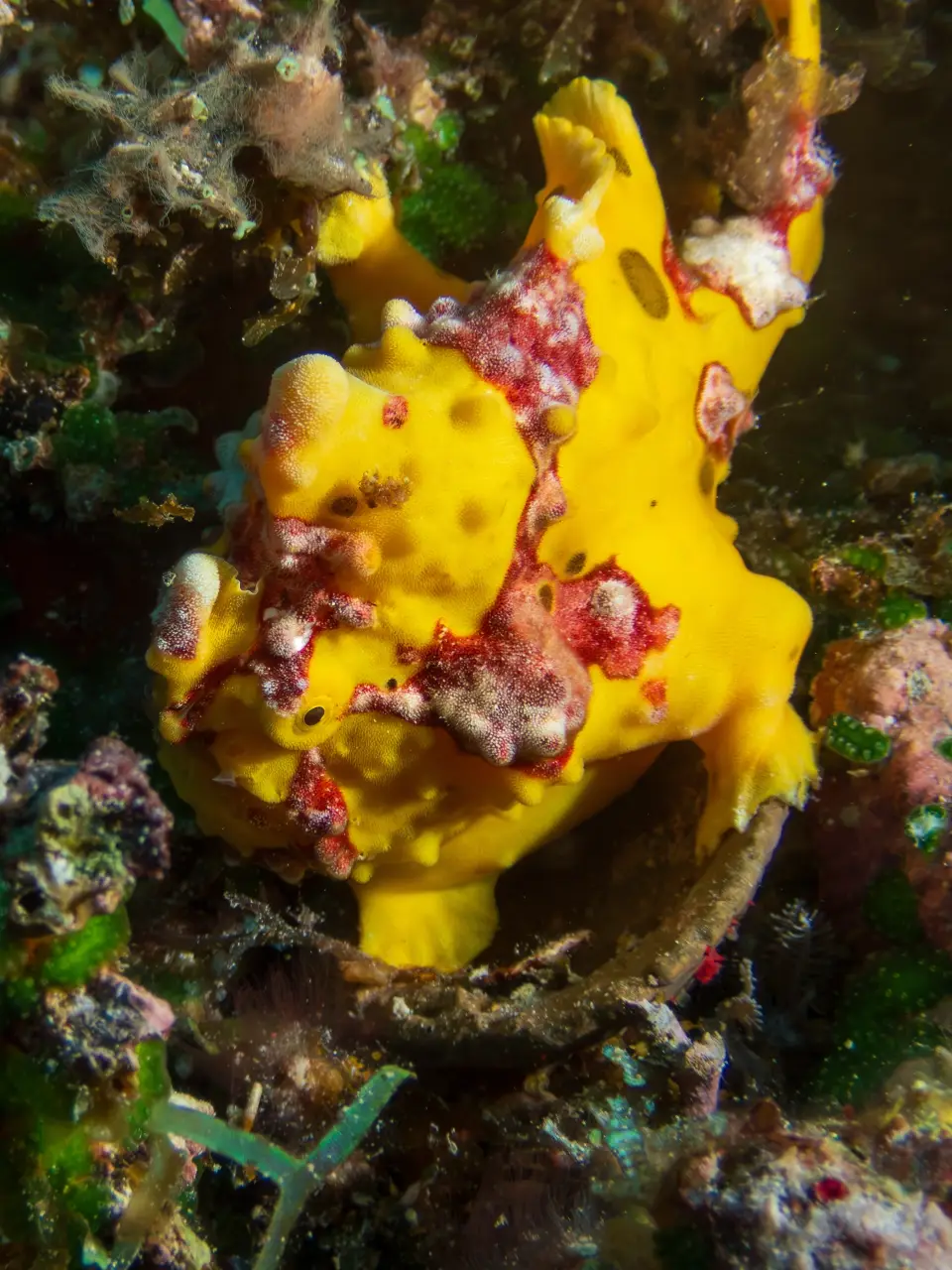
Species You Might Encounter in Bohol
The Philippines is home to a variety of frogfish species. In Bohol, the most commonly spotted include:
- Painted Frogfish (Antennarius pictus)
Often yellow, orange, or mottled with spots. Frequently seen on sponges and coral outcrops. - Giant Frogfish (Antennarius commerson)
As the name suggests, they’re among the largest species—sometimes over 30 cm long. They can change color to match their surroundings. - Warty Frogfish (Antennarius maculatus)
Also called the clown frogfish, they often have striking patterns and a chunky profile with wart-like protuberances.
Each species brings its own quirks and camouflage tactics, making every sighting a new surprise.
Why Frogfish Matter to the Ecosystem
While not large or flashy like turtles or sharks, frogfish play an important role in the reef’s food web. As ambush predators, they help control populations of smaller reef fish and crustaceans, maintaining ecological balance.
Their presence also indicates a healthy, biodiverse reef system, as they depend on complex habitats to hide and hunt. Protecting frogfish means protecting the reef itself.
Tips for Spotting Frogfish
Spotting a frogfish can be tricky, but here are some tips to improve your chances:
- Look for movement of the lure—this is often the only giveaway.
- Check unusual-looking “sponges” or lumps that seem a bit too smooth or “blobby.”
- Watch where your guide points—locals know the regular hangouts.
- Take your time—slow, deliberate observation is the key to macro diving.
Once you’ve seen one, you’ll start spotting more. It’s like your brain learns a new shape to recognize on the reef.
Respecting the Masters of Camouflage
While frogfish might sit still and seem unbothered, they are delicate animals. When observing or photographing them, please remember:
- Never touch or prod them to get a better photo.
- Avoid using bright strobes or flashes repeatedly.
- Maintain good buoyancy control to avoid damaging their habitat.
At Sierra Madre Divers, we believe in responsible diving practices and protecting the amazing creatures we encounter. Our guides are trained to ensure that your frogfish encounter is exciting—but also safe and sustainable.
Dive Into the World of Frogfish in Bohol
Bohol’s underwater world is full of marvels, but few creatures are as strangely enchanting as the frogfish. With their lumpy bodies, sneaky lures, and unmatched camouflage, these reef dwellers offer one of the most rewarding challenges for divers and photographers alike.
Whether you’re new to macro diving or just hoping to see something unusual on your next fun dive, frogfish are a highlight worth looking for—and once you see your first one, you’ll be hooked.
Join us at Sierra Madre Divers and let our expert guides help you uncover the hidden secrets of Bohol’s reefs—including its masters of disguise. Contact us today to book your next dive adventure.

